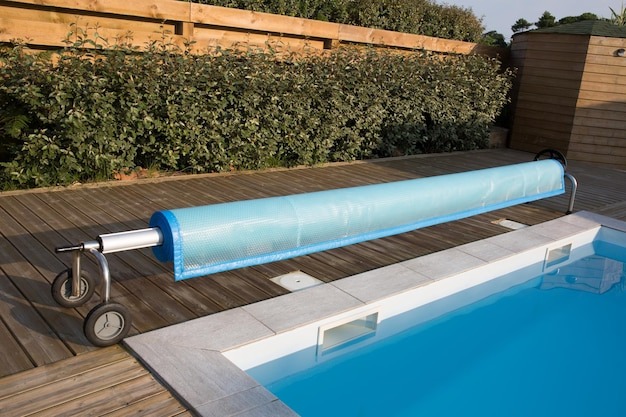Warm weather means the pool season is about to begin. But before that first splash, the pool must be clean, balanced, and safe. A smooth pool opening saves time, avoids damage, and gives peace of mind through every sunny day ahead. With a clear checklist and the right steps, the entire process can feel simple and efficient.
Before diving into the work, consider checking your setup or getting support from professionals in your area. A trusted Roseville pool service can make sure all parts function properly and offer seasonal checkups that catch issues before they turn into expensive repairs. Even without full service, tips from local experts help guide key steps for the best results.
Step 1: Remove the Pool Cover and Clean the Surroundings
Start by clearing off debris and standing water on the cover. Use a pool cover pump to handle water build-up. Remove the cover slowly to prevent debris from falling in. Rinse and dry the cover before storing it in a dry place. Sweep the pool deck and remove leaves, sticks, and other debris near the pool.

Step 2: Reconnect Equipment and Inspect for Damage
Reconnect the pump, filter, heater, and chlorinator if you disconnected them for winter. Look for cracks, leaks, or wear on each piece. Lubricate o-rings and replace worn-out parts. Check the skimmer and return lines for clogs or leaks. A proper inspection avoids issues once water starts circulating again.
Step 3: Refill the Pool and Remove Surface Debris
If the water level dropped, add fresh water until it reaches the midpoint of the skimmer opening. Use a leaf net or skimmer to remove leaves, insects, and floating debris. Avoid using automatic cleaners at this stage since large debris can clog them.
Step 4: Prime the Pump and Start the Filtration System
Make sure the pump is full of water before starting. Turn on the filtration system and monitor it for a few hours. Watch pressure gauges and flow meters for irregular readings. A smooth flow shows that the system is ready. Let the pump run continuously for at least 24 hours during the opening phase.
Step 5: Test the Water Chemistry
Use a reliable test kit or take a sample to a pool supply store. Check pH, chlorine, alkalinity, calcium hardness, and cyanuric acid levels. Adjust each value slowly using appropriate chemicals. Keep pH between 7.2 and 7.6, and chlorine between 1.0 and 3.0 ppm. Follow chemical instructions carefully for safe adjustments.
Step 6: Brush and Vacuum the Pool Surfaces
Brush the pool walls and floor to loosen dirt and algae. Then vacuum the pool to remove debris settled at the bottom. Run the filter daily for several days to clear cloudy water and ensure all contaminants get filtered out. Backwash the filter as needed during this period.

Step 7: Add Seasonal Chemicals
Add algaecide or clarifiers to prevent cloudy water and algae growth. Some pool owners add metal sequestrants if their water has high metal content. Shock the pool with chlorine if it appears green or cloudy, or if you smell strong chloramine odors.
Final Checks Before Enjoyment
Double-check safety features like ladders, diving boards, and fencing. Make sure they are stable and meet safety standards. Store all pool tools in a dry, shaded area. Keep chemicals locked and labeled away from children and pets.
Clean water, smooth equipment, and balanced chemistry set the tone for a stress-free season. Pool care does not need to feel overwhelming. With the right preparation, every swim becomes a reward for planning ahead.







